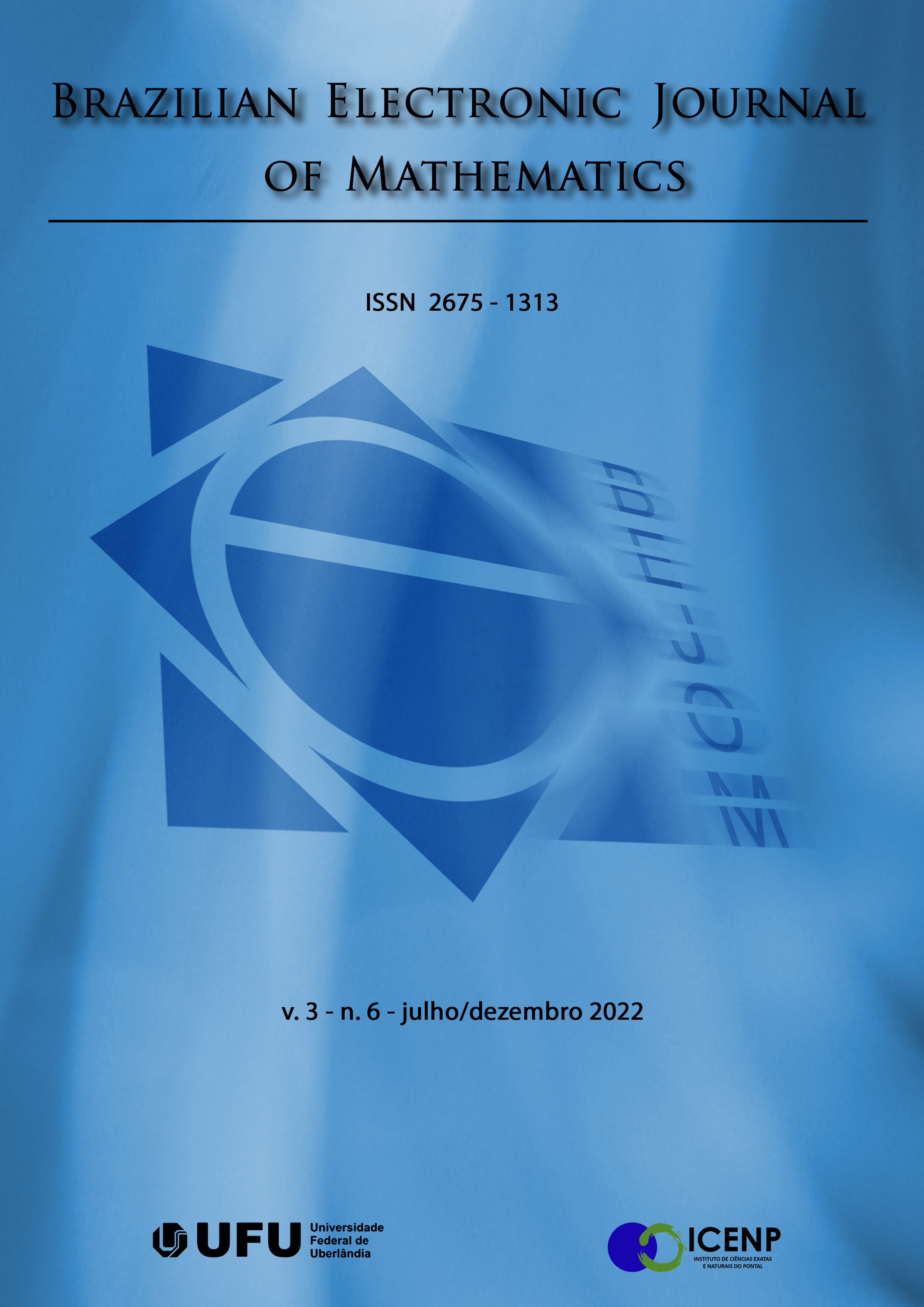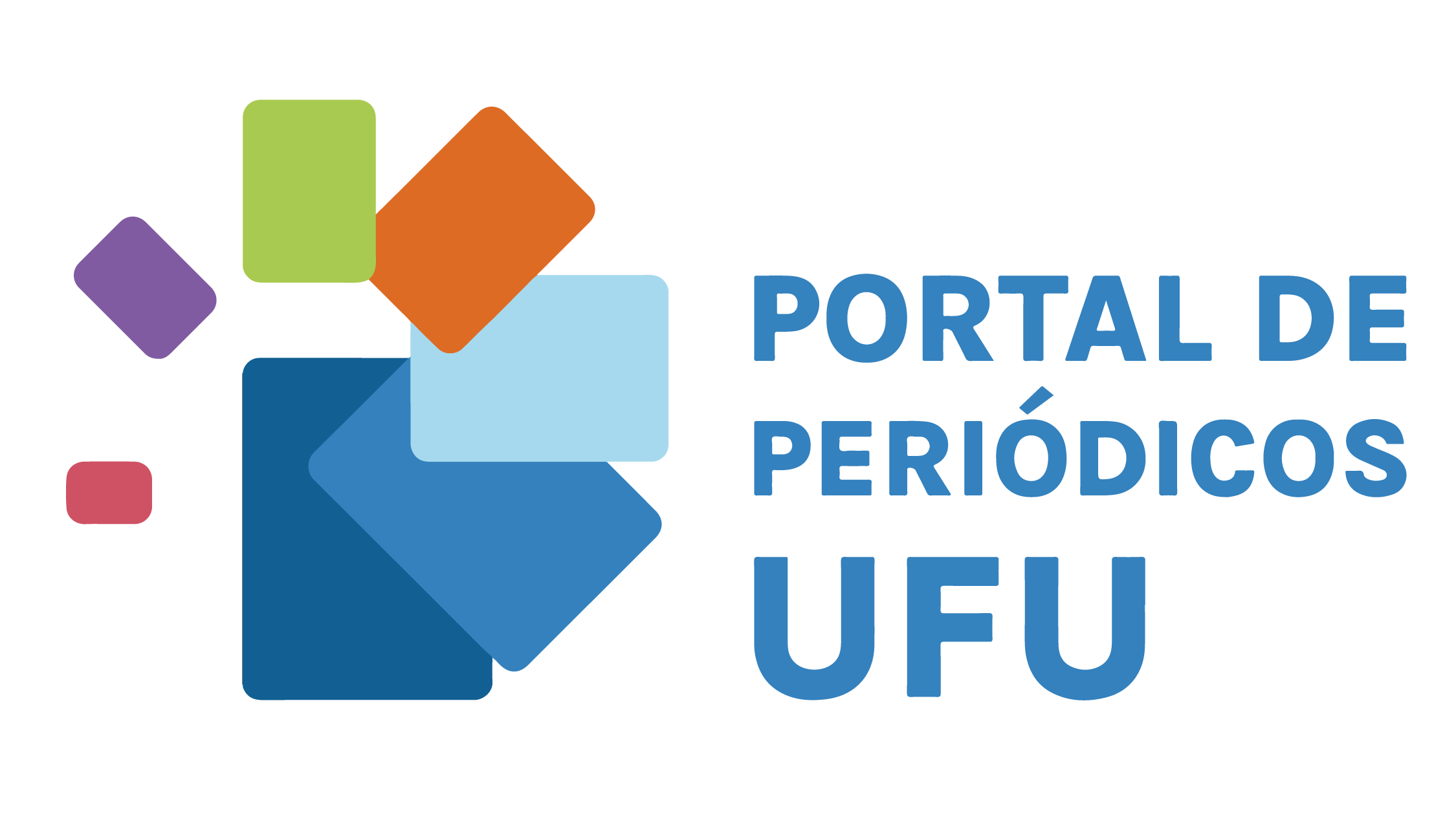Tirinha e matemática: orientações didáticas a partir de um problema do livro o homem que calculava de Malba Tahan
DOI:
https://doi.org/10.14393/BEJOM-v3-n6-2022-65876Palavras-chave:
Ensino de Aritmética, Quadrinhos, Malba Tahan, O Homem que calculava, Orientações didáticasResumo
No decorrer dos anos, os professores de Matemática buscam métodos que os auxiliem a superar obstáculos e dificuldades relacionados ao ensino e à aprendizagem da referida disciplina em sala de aula. O uso das tirinhas no âmbito escolar surge, então, como uma proposta didática, pois possui um grande potencial na construção de conhecimentos e em uma melhor absorção dos conceitos matemáticos pelos estudantes. Além disso, as tirinhas podem ofertar diversos benefícios ao ensino de Matemática, uma vez que a junção da imagem e do texto podem favorecer de forma atraente a transmissão e a discussão de conceitos específicos da Educação Básica. Deste modo, o artigo tem o intuito de apresentar uma orientação didática para o ensino de Aritmética a partir do problema o nosso encontro com um rico xeque contido no livro O Homem que calculava, de Malba Tahan, utilizando tirinhas. Para alcançar esse objetivo, utilizou-se uma metodologia qualitativa de cunho descritivo que resultou na construção da orientação didática. Assim, concluímos que as tirinhas podem ser incorporadas às aulas de Matemática, promovendo reflexões e discussões acerca dos conteúdos matemáticos, bem como fomentando o incentivo e hábito.
Downloads
Referências
ALMEIDA, I. A. T. A didática de Malba Tahan: Alunos como solucionadores criativos de problemas. Revista da Sociedade Brasileira de Educação Matemática, São Paulo, v. 15, n. 19, p. 345-352, maio 2018.
AULETE, C. Novíssimo Aulete dicionário contemporâneo da língua portuguesa. Rio de Janeiro: Lexikon, 2011.
BRASIL. Ministério da Educação. Base Nacional Comum Curricular. Brasília,2018.
CARVALHO, D.A educação está no gibi. Campinas: Papirus, 2006.
FIORENTINI, D.; LORENZATO, S. Investigação em educação matemática: percursos teóricos e metodológicos. 3. ed. Campinas: Autores Associados, 2009.
LACAZ, T. M. V. S.; OLIVEIRA, J. C. de F. Uma Proposta de Ensino de Matemática, Pesquisa e Extensão na Formação Inicial e Continuada de Educadores do Vale do Paraíba. Educação Matemática em Revista, São Paulo, ano 13, n. 23, p. 43-55,dez. 2007.
McCLOUD, S. Desvendando os Quadrinhos. 2. ed. São Paulo: Makron Books,2005.
PEREIRA, A. C. C. Utilizando quadrinhos como interface entre matemática e ensino por meio de episódios e sequências didáticas na formação inicial de professores. Revista Temporis, v. 16, n. 2, p. 308-328, 2016.
PEREIRA, A. C. C.; ALCÂNTARA, C. S. de. Histórias em quadrinhos na educação: possibilidades de uma prática. 1ª ed. Fortaleza, Ceará: Editora da UECE,2021.
PESSOA, A. R.A linguagem das histórias em quadrinhos. João Pessoa: Editorada UFPB, 2016.
PESSOA, A. R. Charge como estratégia complementar de ensino. Revista Temática, João Pessoa, v. 7, n. 3, p. 1-11, mar. 2011.
SOUZA, S. C. de; DOURADO, L. Aprendizagem Baseada em Problemas (ABP):Um Método de Aprendizagem Inovador para o Ensino Educativo. Holos, Natal, v.5, n. 31, p. 182-200, set. 2015.
TAHAN, M.O homem que calculava. 100. ed. Rio de Janeiro: Record, 2021.
VALENTIM, M. A. Literatura e Matemática: o homem que calculava, de Malba Tahan. 2010. Dissertação (Mestrado em Literatura brasileira) - Departamento de Letras, Centro de Ensino Superior de Juiz de Fora, Juiz de Fora, 2010. Submetido em 02 jun. 2022. Aceito em 10 set. 2022Braz. Elect. J. Math., Ituiutaba, v.3 - n.6, jul/dez 2022, p. 121 - 136.136
Downloads
Publicado
Edição
Seção
Licença
Copyright (c) 2022 BRAZILIAN ELECTRONIC JOURNAL OF MATHEMATICS

Este trabalho está licenciado sob uma licença Creative Commons Attribution-NonCommercial 4.0 International License.
- Os artigos publicados a partir de 2025 são licenciados sob a versão CCBY-4.0. Ao enviar o material para publicação, os autores estarão automaticamente, concordando com as diretrizes editoriais do periódico e assumindo que o texto foi devidamente revisado. A submissão simultânea de artigos a outras revistas é proibida, e, é também proibida a tradução de artigos publicados no periódico para outro idioma sem a devida autorização.
- Os artigos publicados em anos anteriores a 2025 são licenciados sob a versão CC BY-NC 4.0.









